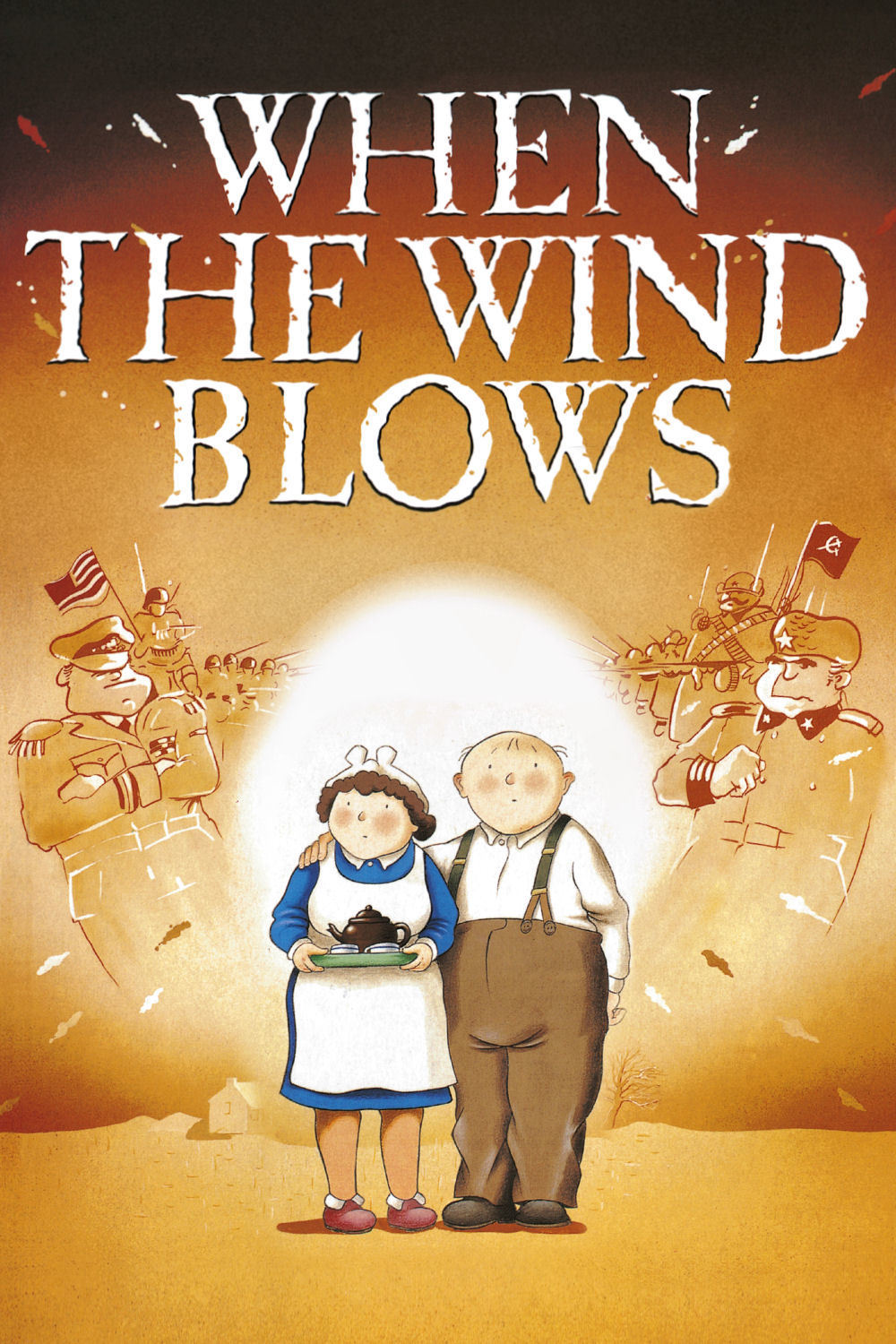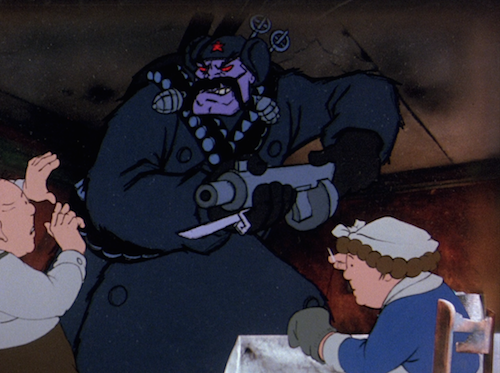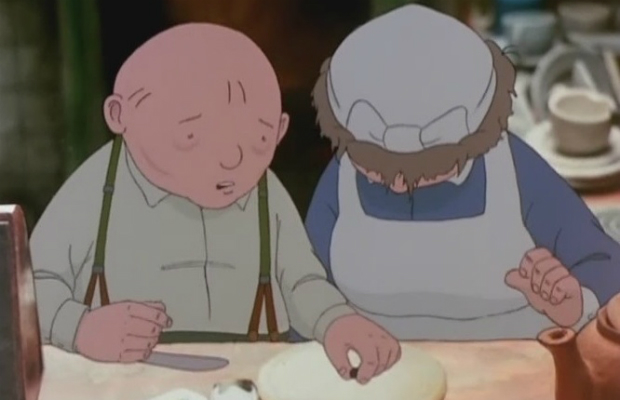 |
| Figure 1: Theatrical Poster (Covey, 2015) |
- Director: Jimmy Murakami
- Native Title: When The Wind Blows
- Primary Language: English
- Format: Colour
- Year of Release: 1986
- Budget: Unknown
- Film Length: 80 minutes
- Production Company: Meltdown Productions, British Screen Productions, Film Four International
Named after the David Bowie track presented at the start, When the Wind Blows is an animated British production set at the height of the Thatcher/Reagan era of the Cold War, the film examines the paranoia of Mutually Assured Destruction and became famous for displaying the rather disastrous effects of nuclear fallout on the human body. And looks at how well-prepared the British public truly was for an actual nuclear attack, interspersed with recollections of life during the Second World War.
For American cinema, 1986 was the age of the macho one-man army, the post-apocalyptic survivor and the plucky agent averting World War III. But what makes
Where The Wind Blows stand out is it takes an alternative view of this genre.
"Possibly most important is the screenplay by Raymond Briggs, who adapted
his own novel and who has a wonderfully comic way of turning a cliche
inside out." (Canby, 1988). Instead of communists and a small armoury, we see a quaint middle-class couple as they come to terms with how a single bomb has turned the Sussex contryside into a scene from
Fallout or
Mad Max. But worse, much of the film watches them as they progressively become sicker and sicker from an illness they don't even realise they have.
 |
| Figure 2: How the film tackles nuclear war: Two middle-class retirees slowly dying of rad poisoning. (Roberts, 2011) |
There is a degree of quintessential British charm underlying the film, a sense of "Keep calm and carry on" that the two protagonists James/Jim (John Mills) and Hilda Bloggs (Peggy Ashcroft) maintain, and to the film's credit.
"Though the subject matter of this film is dark, there is a fair amount of low-key comedic moments in the dialogue." (Burbank, 2015) The two discuss what James would wear when the bomb drops, while Hilda's first priority after emerging from the shelter is to clean up. And when the two discuss what should happen should a big scary Russian soldier burst though the door (complete with a visualisation of a hairy red-eyed giant doing just that), Hilda's reasoning is to offer the invader a cup of tea because she heard Russians like tea.
 |
Figure 3: Imagine spots like this are scattered throughout the film, often in discussions on what
their lives in WW2 were like. (Remer, 2014) |
Sometimes however the comedy hits a sad note, this becomes particularly the case when it progressively sets in that the couple are dying and unlikely to be rescued.
"It’s thoroughly dark and sinister throughout to watch as this lovable, if dim-witted couple ‘Keep Calm and Carry On’ blissfully unaware that radiation poisoning is slowly affecting them." (Patrick, unknown). Initially this begins with James/Jim reading a book mentioning the various lines of defense such as NORAD as if he were reading a bedtime story, or pretending to be fighting the Russians only for his memory to slip into calling them Jerry (WW2 Germans). This optimism however becomes somewhat hindering as it evolves into mistaking the blood from Hilda's bleeding gums for lipstick or chalking up the symptoms of radiation sickness - weakness, hair loss and blotches on the skin - to something people their age develop even as the two become physically unable to lift themselves out of bed.
 |
Figure 4: Jim's theories for Hilda's deteriorating condition hilight how little he knows of what's going on.
(Smith, 2014) |
Raymond Briggs captures both the harsh reality of the effects of nuclear war, and the charm of British attitudes at the time in his humerously written yet incredibly dark animation. It may seem peculiar for the two main characters to act with such mild reactions to what has happened, but this only plays into the dread and sets this film firmly into an era where animation was considerably dark. The quintessence of the film can be seen in our two leads, both of whom remember the Second World War fondly. For them the new ways war could be waged at this time were scary and alien, completely lacking in the romanticism they experienced in their prime. And the film does an impressive job of cementing that the late cold war was an alien time for the veterans of the last great war of the twentieth century.
References





No comments:
Post a Comment